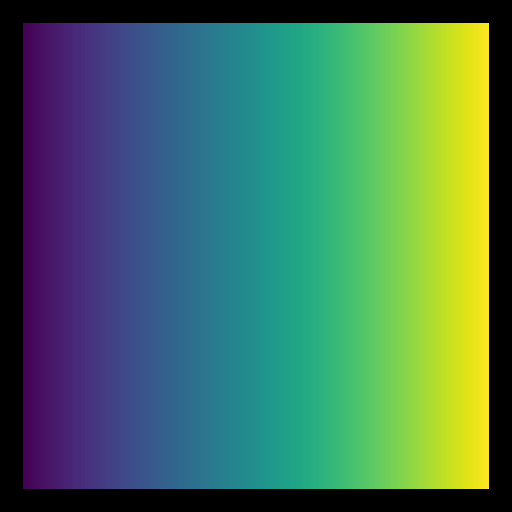Note
Go to the end to download the full example code.
Complex image data#
Simple use of SceneCanvas to display an image consisting of complex numbers.
The left and right arrow keys can be used to cycle the view between the real, imaginary, phase, or magnitude of the data.

import sys
import numpy as np
from vispy import app, scene
def complex_ramp(size=512, phase_range=(-np.pi, np.pi), mag_range=(0, 10)):
"""Returns a complex array where X ramps phase and Y ramps magnitude."""
p0, p1 = phase_range
phase_ramp = np.linspace(p0, p1 - 1 / size, size)
m0, m1 = mag_range
mag_ramp = np.linspace(m1, m0 + 1 / size, size)
phase_ramp, mag_ramp = np.meshgrid(phase_ramp, mag_ramp)
return (mag_ramp * np.exp(1j * phase_ramp)).astype(np.complex64)
canvas = scene.SceneCanvas(keys="interactive",
title="Complex number view: phase")
canvas.size = 512, 512
canvas.show()
# Set up a viewbox to display the image with interactive pan/zoom
view = canvas.central_widget.add_view()
# Create the image
img_data = complex_ramp()
# View it with "complex_mode=imaginary"
image = scene.visuals.ComplexImage(img_data, parent=view.scene, complex_mode="phase")
# Set 2D camera (the camera will scale to the contents in the scene)
view.camera = scene.PanZoomCamera(aspect=1)
view.camera.set_range()
view.camera.zoom(1)
complex_modes = [
"real",
"imaginary",
"magnitude",
"phase",
]
mode_index = 3
@canvas.connect
def on_key_press(event):
global mode_index
if event.key not in ['Left', 'Right']:
return
if event.key == 'Right':
step = 1
else:
step = -1
mode_index = (mode_index + step) % len(complex_modes)
complex_mode = complex_modes[mode_index]
image.complex_mode = complex_mode
canvas.title = f'Complex number view: {complex_mode}'
canvas.update()
if __name__ == "__main__" and sys.flags.interactive == 0:
app.run()
Total running time of the script: (0 minutes 0.643 seconds)
